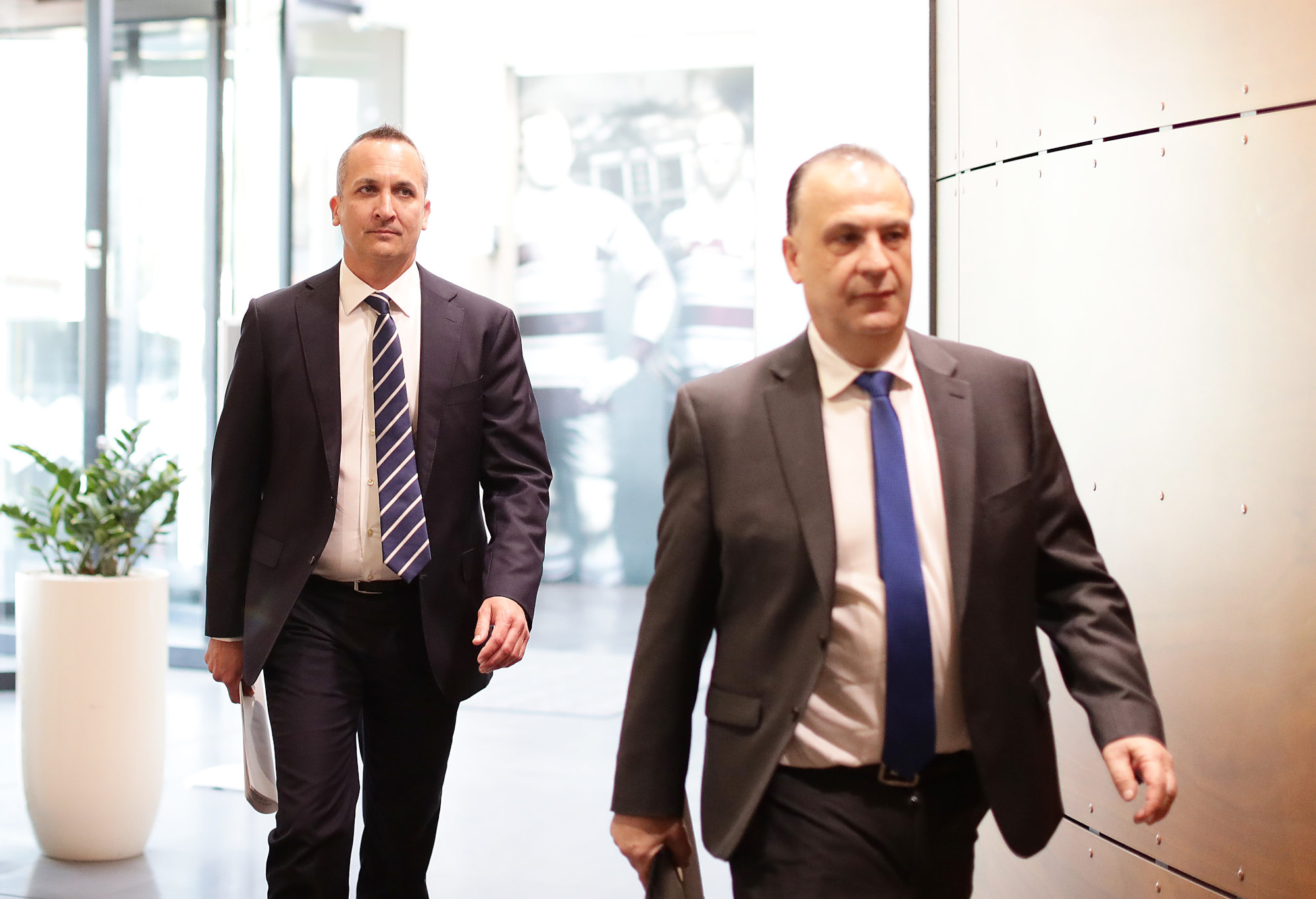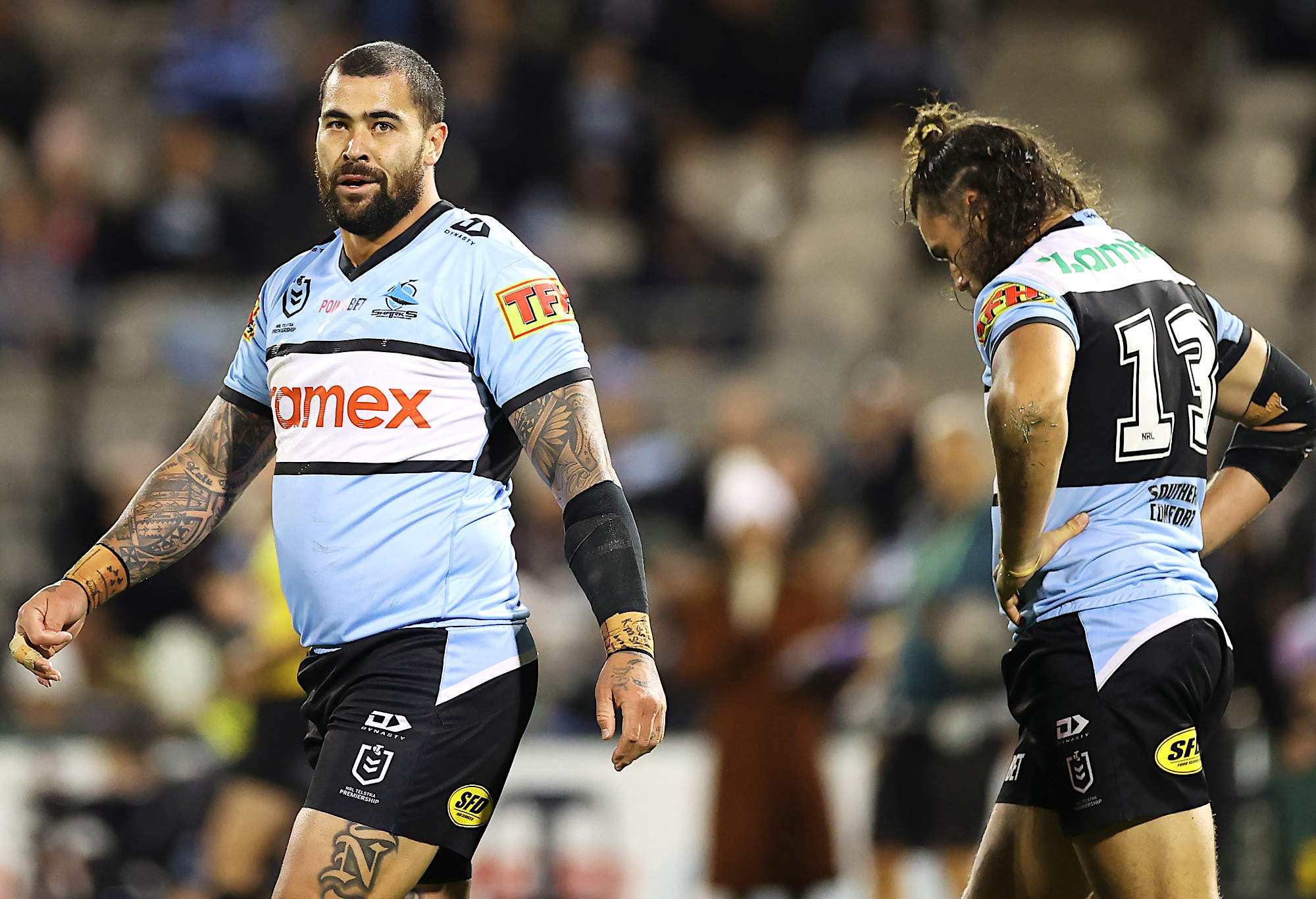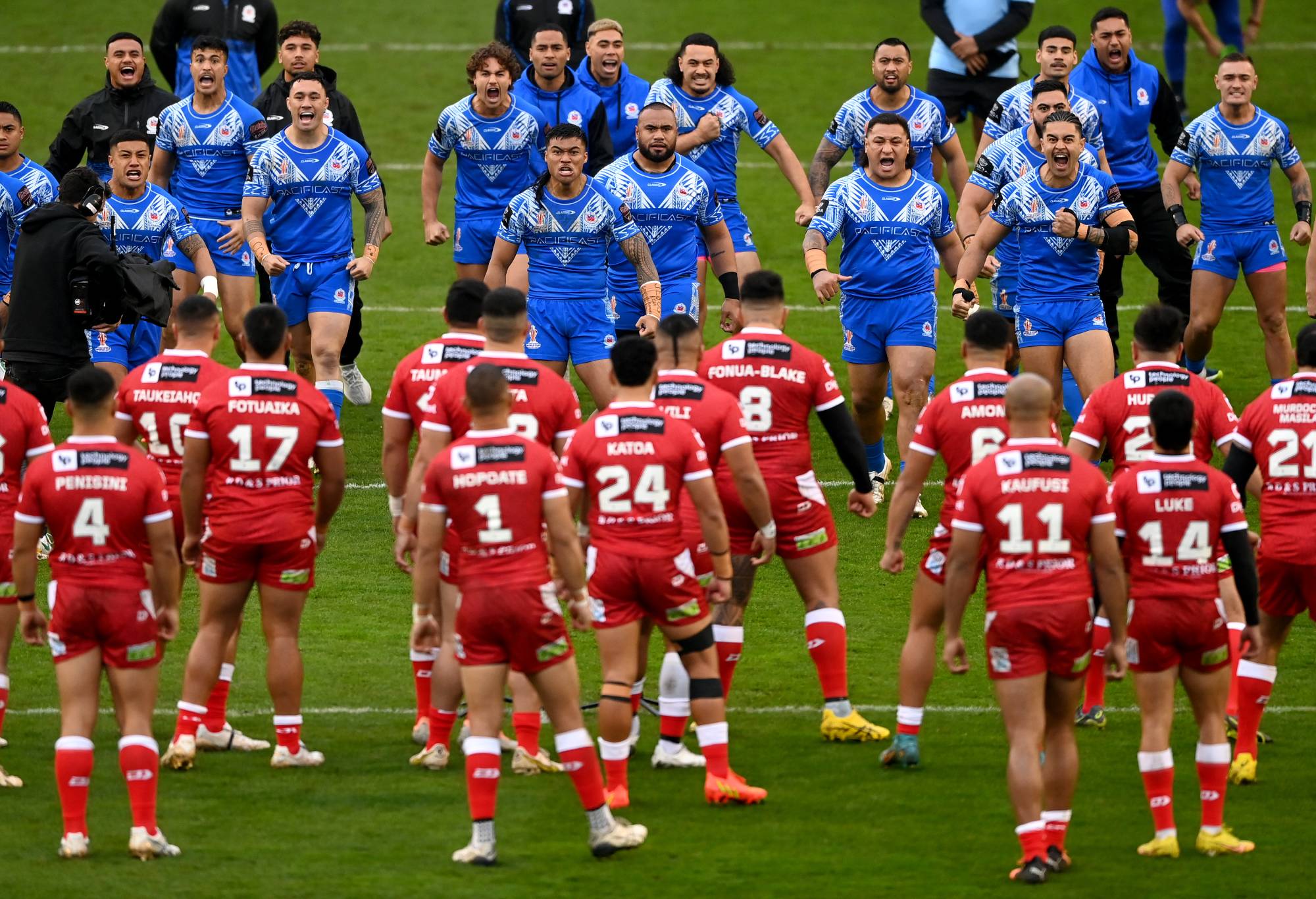It might be a worrying sign when the best analysis of the NRL’s protracted industrial dispute with its own players comes from Sydney’s anarchist community, but that’s where we are.
A group calling themselves Black Flag Sydney – “an autonomous collective of anarchist workers who organise mainly on unceded Gadigal land” per their website – released a piece called “Class War comes alive in the NRL” which dissected the dispute from an anarchist perspective, as one might expect, but also from a common sense perspective that many people who are not well-versed in Bakunin and Kropotkin can probably understand.
The current media boycott is framed, as it should be, within the confines of a bog-standard industrial dispute, with all the dynamics one might expect.
There’s the NRL, the bosses, and the Rugby League Players’ Association (RLPA), the union. Except, in this case, as the piece points out, that isn’t quite it.
The RLPA is not a union, it is a professional organisation, who draw a significant amount of their funding from the NRL itself, as part of a deal struck over a decade ago.
As such, it is more akin to the system in Germany, for example, where most unions collaborate with bosses to thrash out deals to avoid going close to industrial action.
It’s quite unlike anything that the average Australian punter would understand from watching the AWU or CFMEU go about their business.
The difference between a union and an association seems arcane, but it is relevant and we’ll get to it later. But in terms of the dynamic, the RLPA-NRL dispute is exactly what it looks like.
To use the time honoured, understandable framework of The Simpsons: Andrew Abdo is Mr Burns, trying to buy off the Springfield Nuclear Plant union with the same deal, plus a keg of beer for their meeting, while Clint Newton is union kingpin Homer Simpson, seeking to preserve the dental plan and a green cookie on St Patrick’s Day.
With where we stand now, that’s it: the RLPA doesn’t want more money, and the salary cap aspects of this were agreed months ago.
They were announced unilaterally by the NRL – without telling the RLPA – which did give the impression that it was done to help clubs budget more than to assuage any doubts that the players might have had.

Australian Rugby League Commission chairman Peter V’landys and NRL chief executive Andrew Abdo. (Photo by Mark Metcalfe/Getty Images)
What it is about is conditions, and that’s where the negotiations have broken down. Conditions tend to link back to money, of course, because someone has to pay for them, but don’t believe that this is about wages.
It’s not, and that’s what the RLPA have been fighting hardest to have heard. It’s also what their members actually care about, and it’s why they’re currently withdrawing their labour from media duties.
Ardent Simpsons fans will remember that Homer doesn’t actually want to push for a strike in that episode, but is forced to by his membership, and that part is largely analogous here too.
The general feeling from the players – as is often the case in industrial disputes – is more radical than the union bosses themselves.
Remember: while we might think of the likes of Daly Cherry-Evans and Josh Addo-Carr, both RLPA delegates at their clubs, as leaders of this, they are not representative of the bulk of the membership.
That’s why the push for greater money, when it existed late last year, was aimed at the bottom and not at the top.
For every million-dollar NRL player, there are five on minimum wage and even more on even less in the Women’s game, all of whom have the same voting rights.
How this has been depicted – greedy players asking for more cash to pile on inflated salaries – is like judging last year’s NSW rail strikes based on solely what the drivers’ wanted. They mattered, but it was the rank and file that provided the bulk of the votes.
When this is presented as a pay dispute – which, fundamentally, it isn’t – it misses that, to the extent to which money comes into it, it comes into it at the very bottom. It’s about getting more players from borderline professionalism to full-time professionalism.
Examples of this are rife: you can still pay Brendan Hands, the starting Parramatta hooker, $110 for a 45-minute coaching session, because he was supplementing his income that way not long ago.
Fringe first graders like Ethan Bullemor, Jack Cogger and Lachie Miller are all also available with the same company as well as a host of NSW Cup and NRLW players.
It’s the dental plan aspect, however, that is most important. Currently, the NRL funds a certain amount of post-career care for its players, but not nearly as much as the RLPA would like.
Currently, the block fund that the RLPA gets to allocate – though the NRL want to control that more – is being split many ways, and the players would like there to be more investment in them once their careers have ended.

(Photo by Mark Kolbe/Getty Images)
Notably, the example of Andrew Fifita has been brought up: he had to rush through several surgeries to get them in under the allotted 12 months post-retirement that will be paid for by the NRL. After that, he’s on his own.
In a sport that will come to be defined by concussions – why might not manifest in symptoms for years – this is obviously a problem with the existing CBA, and one that the NRL should be getting ahead of. They can pay now, or likely be sued later.
There’s a long list of 100 things that the players say the NRL has changed from what they thought they had agreed – far too many to include here – but there are some headline bits that are worth going into.
For one, there’s the idea of more games. The NRL would like to add another two fixtures when expansion comes, and reserve their right to do that, whereas the players want to be involved in decision-making.
As far as pub tests go, this is a hands-down win for the players: pretty much anyone in a union would object to being asked to do more work unilaterally by the boss, especially if their job was a physically demanding one.
The players say they’re being asked to perform more work for more pay, but object that they are already at close to maximum in terms of the amount of work they can do. Indeed, if the NRL was to add two more games before the next salary cap deal, they could add more work with no extra pay at all.
Again, any fan who has done manual labour will understand this: if you’ve just done a 12-hour shift, being told by your boss to do another four hours is bad regardless of them saying they’ll pay overtime. At some point, the work is too much and the cash isn’t the issue.
The next issue surrounds how much cash there is in general, because the RLPA say the NRL isn’t being straight with them on how big the pot actually is. This is difficult to discern – obviously, if they told the media, then the RLPA would know too – but it does suggest a lack of trust.
The NRL hasn’t disclosed the full extent of the TV deal it signed during the height of the pandemic, but this is clearly something that the players want access to. The balance of probabilities would suggest that the reason the NRL won’t disclose it is because it’s nowhere near what the AFL got, which would make them look bad.
The NRL also thinks that international footy should come out of the centralised pot of broadcast cash, whereas the RLPA thinks it should come out of cash generated by the games themselves.

(Photo by Gareth Copley/Getty Images)
The NRL already gave away international rights to Australia and New Zealand games for a song, meaning that there is no extra broadcast cash, and the broadcasters now expect to be given what could be premium content – as has been proven by World Cup viewing figures – for next to nothing.
Again, this might just be a ploy by the RLPA to point out how bad the deal the NRL signed with broadcasters is: by giving away the rights as part of the wider NRL deal, the league has undervalued the international game to the extent that Foxtel and Nine now think they get it for free, much as had been the case with the women’s game.
There’s a reason the NRL don’t talk about it a lot, or why the AFL was able to get nearly twice as much for their rights despite not having an international game at all.
Lastly, there is the trust issue, and this is where the union/association part kicks in. Most of the laundry list of problems are small, but they amount to a whole lot when taken collectively.
The lack of trust lead to both sides agreeing to a mediator, Brett Clegg, who they both say was perfectly fine at his job, but really, they shouldn’t have had to go to one.
If the RLPA was still a union, they could simply have called in the Industrial Relations Commission, just like the rail workers did last year to the NSW government. They’d have what they want now as a right.
As it stands, they have to act like a union without being one. The media ban is the best they can do at the moment: if nothing else, it’s reminding the broadcasters who the talent are, and doubtless they’ll be reminding the NRL.
Whether they can go further, or if they will need to, remains to be seen. Abdo said that he “won’t be bullied or we won’t be threatened” by the RLPA, but realistically, that’s what industrial disputes are about. Everyone threatens and bullies until something forces them to come together.
The media boycott is the first part of that, and a timely reminder of what the players can do. The NRL has to respond. The ball is in their court.































































































